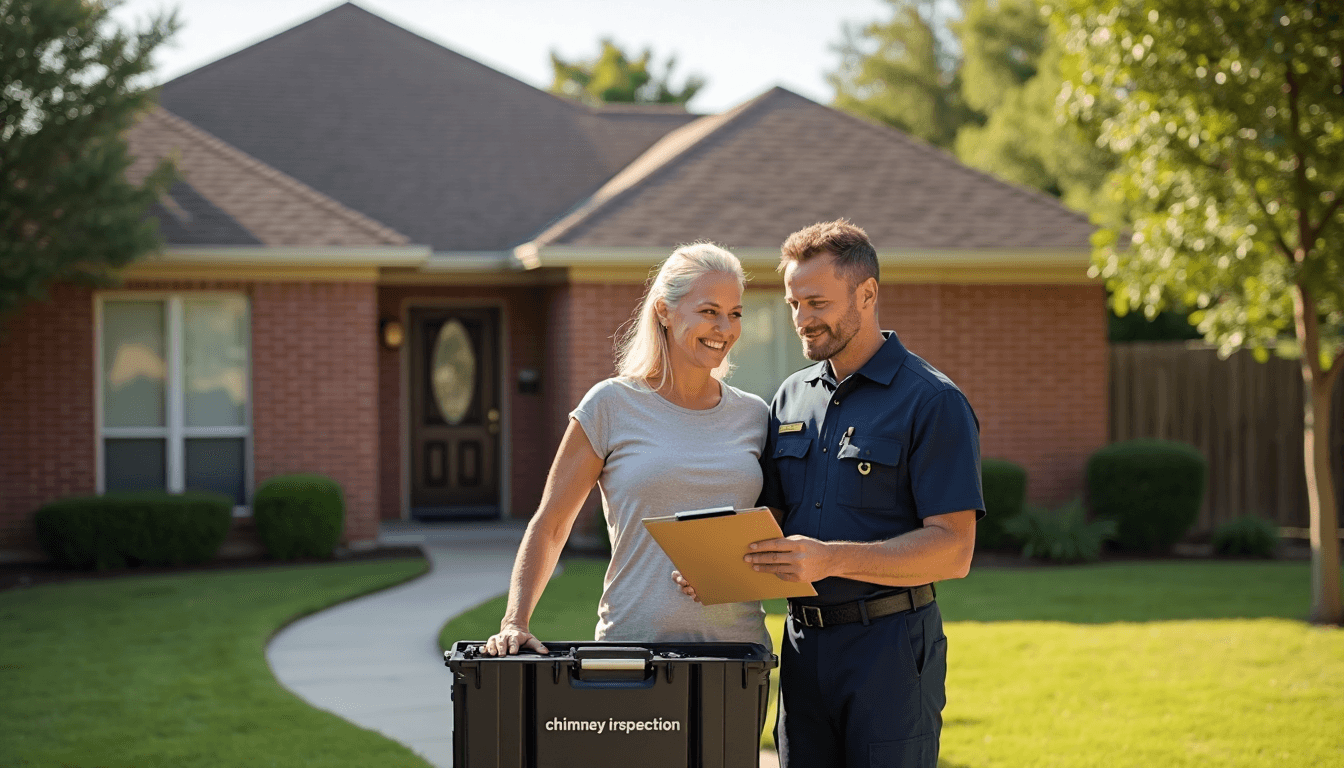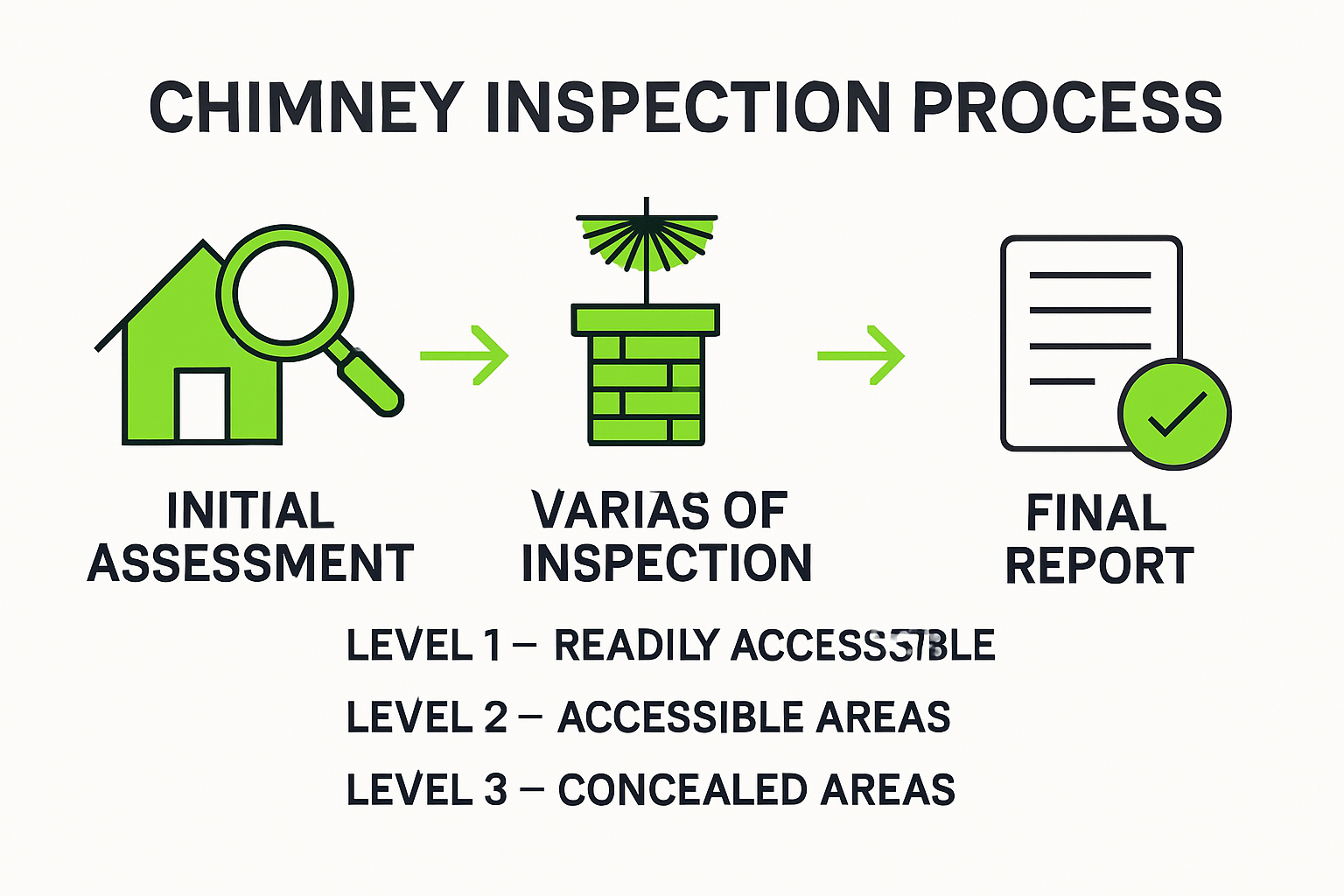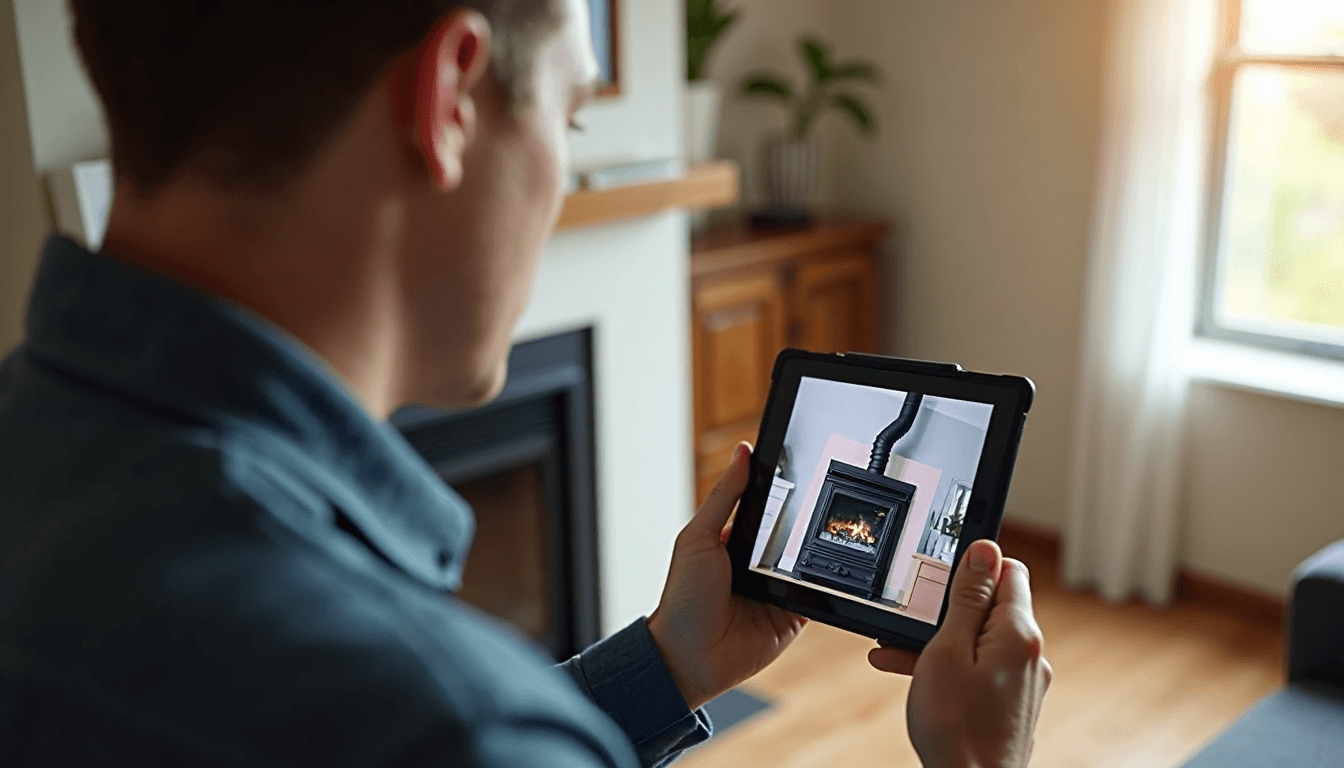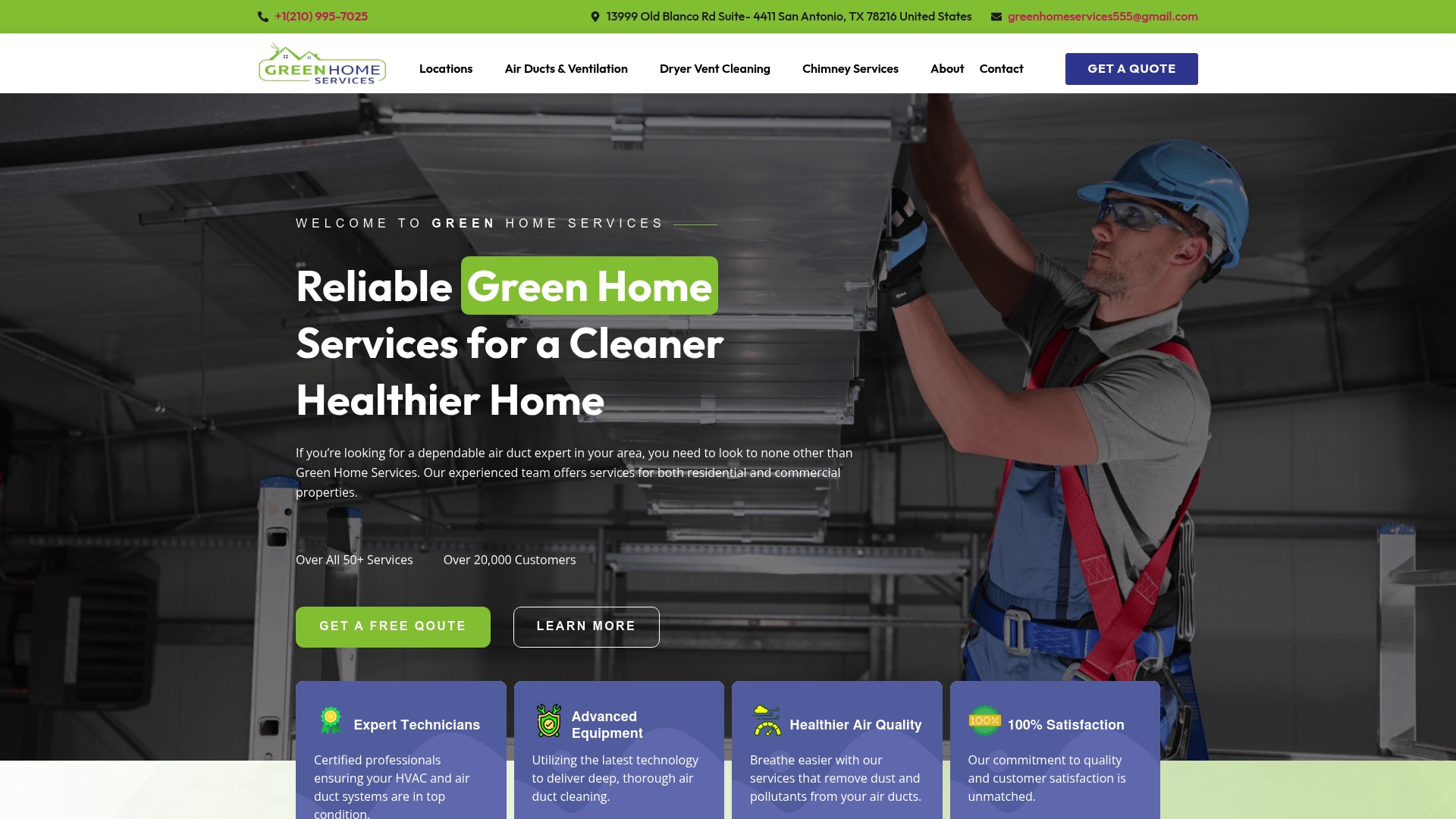
Chimney inspections might sound routine for Texas homeowners, but 43 percent of home heating fires are caused by fireplaces and chimneys according to national fire data. You might expect old brickwork or visible soot to be the main risks. The real surprises often hide inside the flue—dangerous creosote buildup, hidden cracks, and animal nests can put your entire home at risk without any obvious signs. That means the checkup you skip this year could be the one that costs you thousands or impacts your family’s health in ways you never imagined.
Table of Contents
- Understanding The Chimney Inspection Process
- Key Steps In A Professional Chimney Inspection
- Importance For Texas Homeowners And Air System Clients
- Choosing A Qualified Chimney Inspector In San Antonio And Austin
Quick Summary
| Takeaway | Explanation |
|---|---|
| Regular Inspections are Essential | Texas homeowners should conduct annual chimney inspections to prevent hazards such as creosote buildup and structural damage, especially given the state’s variable climate. |
| Understand Inspection Levels | There are three levels of chimney inspection: Level 1 for routine checks, Level 2 for more thorough examinations during home sales or significant changes, and Level 3 for invasive assessments when serious issues are suspected. |
| Impact on Indoor Air Quality | Neglected chimneys can adversely affect indoor air quality, leading to potential health risks such as respiratory irritants and carbon monoxide exposure, highlighting the importance of regular maintenance. |
| Choose Qualified Inspectors | When selecting a chimney inspector in San Antonio and Austin, prioritize professionals with recognized certifications and local expertise to ensure safe and effective chimney maintenance. |
| Economic Benefits of Maintenance | Regular chimney inspections can detect potential issues early, which helps to avoid costly repairs, maintain home resale value, and enhance overall energy efficiency. |
Understanding the Chimney Inspection Process
Homeowners in Texas face unique challenges when it comes to maintaining their chimneys. The chimney inspection process is a critical safety measure that protects your home from potential hazards and ensures optimal performance of your fireplace system.

The Importance of Professional Chimney Inspections
Chimney inspections are more than a simple checkup. Chimney safety experts recommend a comprehensive annual inspection to prevent potential risks. The National Fire Protection Association (NFPA) emphasizes that even infrequently used chimneys can accumulate dangerous creosote buildup, animal nests, and structural damage that might go unnoticed by untrained eyes.
Texas homes face specific environmental challenges that make regular chimney inspections crucial. The state’s variable climate can cause rapid deterioration of chimney structures, with temperature fluctuations and humidity potentially compromising the integrity of chimney linings and masonry.
Levels of Chimney Inspection
Professional chimney inspections are categorized into three distinct levels, each providing increasing depth of examination:
-
Level 1 Inspection: A basic visual check suitable for chimneys that have been regularly maintained and show no signs of significant changes or damage.
-
Level 2 Inspection: Recommended by experts during home sales, after fires, or when significant changes to the chimney system occur. This comprehensive inspection includes a detailed examination using specialized camera equipment to identify hidden issues.
-
Level 3 Inspection: The most invasive level, involving potential removal of components to access concealed areas. This is typically performed when serious structural problems are suspected.
Below is a table summarizing the three levels of chimney inspection, their purposes, and when each is recommended:
| Inspection Level | Description | When Recommended |
|---|---|---|
| Level 1 | Basic visual check for chimneys with regular maintenance and no changes | Annual inspections for routine use |
| Level 2 | Detailed inspection with specialized equipment; checks hidden components | During home sale, after a fire, or significant chimney system changes |
| Level 3 | Most invasive; may involve removal of parts to access concealed areas | Serious structural issues suspected or after major incidents |
What to Expect During a Chimney Inspection
A professional chimney inspection involves a systematic approach to assessing your chimney’s condition. Certified technicians will thoroughly examine the exterior and interior of the chimney, checking for:
- Structural integrity of the chimney structure
- Signs of water damage or moisture intrusion
- Creosote buildup and potential fire hazards
- Blockages from animal nests or debris
- Condition of the chimney liner
- Proper functioning of dampers and other mechanical components
For Texas homeowners looking to maintain their chimney’s safety and efficiency, our comprehensive chimney sweep cleaning service provides a thorough and professional inspection process tailored to your home’s specific needs.
Remember, a professional chimney inspection is not just a recommended maintenance task. It’s a critical investment in your home’s safety, protecting your family from potential fire hazards and ensuring the optimal performance of your fireplace system.
Key Steps in a Professional Chimney Inspection
A professional chimney inspection is a meticulous process that requires specialized knowledge and advanced tools to ensure your home’s safety and functionality. Understanding the key steps involved can help Texas homeowners appreciate the complexity and importance of this critical maintenance procedure.
External Chimney Assessment
The first stage of a professional chimney inspection begins with a comprehensive external examination. Certified technicians carefully evaluate the chimney’s exterior structure, looking for signs of potential damage or wear. According to the Chimney Safety Institute of America, inspectors pay close attention to:
- Structural integrity of the chimney crown
- Condition of the exterior masonry
- Signs of water damage or moisture intrusion
- Potential cracks or deterioration in the chimney’s exterior
- Proper flashing and sealing around roof interfaces
This initial assessment helps identify potential issues that might compromise the chimney’s performance or pose safety risks to your home.
Detailed Interior Examination
After the external assessment, professionals conduct a thorough interior inspection. Experts from the National Fire Protection Association recommend using specialized camera equipment to perform a comprehensive internal evaluation. The interior examination typically involves:
- Inserting a camera system to inspect the entire chimney liner
- Checking for creosote buildup and potential fire hazards
- Identifying any blockages from debris or animal nests
- Assessing the condition of the damper and other internal components
- Measuring the thickness of the chimney liner and detecting potential cracks

This detailed interior examination allows technicians to identify hidden issues that might not be visible during a standard visual inspection.
Comprehensive Reporting and Recommendations
The final stage of a professional chimney inspection involves creating a detailed report and providing specific recommendations. Certified inspectors document their findings and outline any necessary repairs or maintenance procedures. For homeowners seeking professional chimney maintenance, this comprehensive report serves as a critical roadmap for ensuring your chimney remains safe and functional.
The report typically includes:
- Photographic evidence of any discovered issues
- Detailed assessment of the chimney’s current condition
- Recommended repairs or maintenance procedures
- Estimated costs for potential work
- Suggestions for preventing future damage
Texas homeowners should understand that a professional chimney inspection is more than a routine checkup. It’s a critical investment in your home’s safety, protecting your family from potential fire hazards and ensuring the optimal performance of your fireplace system.
Remember, regular professional inspections can help identify and address potential issues before they become costly or dangerous repairs. By staying proactive and working with certified professionals, you can maintain a safe and efficient chimney for years to come.
Here is a table summarizing the key steps involved in a professional chimney inspection and what each step includes:
| Step | Purpose | What It Involves |
|---|---|---|
| External Chimney Assessment | Identify visible structural and moisture issues | Check crown, masonry, water damage, flashing, exterior cracks |
| Interior Examination | Find hidden/internal hazards | Use camera to check liner, creosote, blockages, damper, cracks |
| Reporting & Recommendations | Document findings and guide next actions | Report with photos, assessments, repair advice, cost estimates |
Importance for Texas Homeowners and Air System Clients
Texas homeowners face unique challenges when it comes to maintaining their home’s air quality and safety systems. Chimney inspections play a critical role in protecting not just the fireplace system, but the entire indoor environment of a home.
Indoor Air Quality and Health Implications
The Texas Department of Insurance emphasizes that neglected chimneys can significantly impact indoor air quality and home safety. Creosote buildup, debris, and potential blockages can create serious health risks for residents. In Texas, where homes often have complex air circulation systems, a compromised chimney can introduce harmful particulates throughout the entire living space.
Potential air quality risks include:
- Increased respiratory irritants
- Carbon monoxide exposure
- Potential mold and moisture development
- Circulation of soot and particulate matter
- Reduced overall air system efficiency
Integrated Home System Considerations
Texas homes often feature interconnected air systems that make chimney maintenance even more crucial. Our comprehensive air duct cleaning service highlights the intricate relationship between chimney health and overall home air circulation. Professional chimney inspections prevent contaminants from spreading through ventilation systems, protecting both the structural integrity of your home and the health of its inhabitants.
Key considerations for integrated home systems include:
- Preventing cross-contamination between different ventilation zones
- Maintaining optimal air system performance
- Reducing potential fire hazards
- Ensuring efficient energy consumption
- Protecting sensitive HVAC components
Economic and Safety Implications
Research from the National Fire Protection Association indicates that regular chimney inspections can prevent costly home repairs and potential catastrophic damage. For Texas homeowners, this means more than just maintaining a fireplace it means protecting their most significant investment.
Economic benefits of regular chimney inspections include:
- Early detection of potential structural issues
- Prevention of expensive emergency repairs
- Maintenance of home resale value
- Reduction in potential insurance complications
- Improved overall home energy efficiency
Texas homeowners should view chimney inspections as a critical preventative measure. The unique climate and environmental conditions in the state make these inspections not just recommended, but essential for maintaining a safe, efficient, and healthy home environment.
By investing in professional chimney inspections, homeowners protect their property, their health, and their financial future. Regular maintenance is not an expense it is a crucial investment in your home’s long-term performance and safety.
Choosing a Qualified Chimney Inspector in San Antonio and Austin
Selecting the right chimney inspector is a critical decision for homeowners in San Antonio and Austin. With the unique environmental challenges of Texas, finding a qualified professional requires careful consideration and thorough research.
Certification and Professional Credentials
The Chimney Safety Institute of America emphasizes the importance of professional certification when selecting a chimney inspector. Homeowners should prioritize professionals who hold recognized credentials, such as CSIA certification, which demonstrates a comprehensive understanding of chimney safety, maintenance, and inspection protocols.
Key certification criteria to look for include:
- CSIA (Chimney Safety Institute of America) certification
- National Fire Protection Association (NFPA) training
- State of Texas professional licensing
- Documented ongoing professional education
- Membership in professional chimney inspection associations
Comprehensive Inspection Capabilities
Research from the National Fire Protection Association reveals that 43% of home heating fires are related to fireplaces and chimneys. This statistic underscores the importance of selecting an inspector with advanced diagnostic capabilities. Our specialized chimney inspection services ensure comprehensive evaluation using state-of-the-art technology.
Essential inspection capabilities include:
- Advanced camera inspection systems
- Moisture and structural integrity testing
- Creosote buildup measurement
- Comprehensive digital reporting
- Thermal imaging technology
Evaluating Local Expertise and Reputation
Texas homeowners should consider inspectors with specific regional expertise. San Antonio and Austin present unique environmental challenges that require localized knowledge. When selecting a chimney inspector, homeowners should:
- Check online reviews and testimonials
- Request references from local homeowners
- Verify insurance and liability coverage
- Confirm experience with Texas-specific chimney challenges
- Evaluate transparency in pricing and reporting
Local expertise matters significantly. An inspector familiar with Texas climate conditions understands how humidity, temperature fluctuations, and regional construction styles impact chimney performance.
Remember, a qualified chimney inspector is more than a service provider. They are a critical partner in maintaining your home’s safety and protecting your family from potential fire hazards. Investing time in selecting the right professional can save thousands in potential repair costs and provide peace of mind.
In the dynamic markets of San Antonio and Austin, choosing a chimney inspector is not just about technical skills. It’s about finding a trusted professional who combines certified expertise with a genuine commitment to your home’s safety and your family’s well-being.
Frequently Asked Questions
What is the importance of annual chimney inspections for homeowners in Texas?
Annual chimney inspections are crucial for Texas homeowners as they help prevent hazards like creosote buildup, structural damage, and potential fire risks. Regular checkups ensure the safe operation of your fireplace system and protect your home and family from unexpected dangers.
How many levels of chimney inspection are there, and what do they entail?
There are three levels of chimney inspection:
- Level 1: A basic visual check suitable for regularly maintained chimneys with no signs of damage.
- Level 2: A detailed inspection recommended during home sales or after significant changes, which includes specialized camera assessments.
- Level 3: The most invasive level, involving the removal of components to access concealed areas when serious structural problems are suspected.
What should I expect during a professional chimney inspection in Texas?
During a professional chimney inspection, a certified technician will assess both the exterior and interior of your chimney. They will check for structural integrity, creosote buildup, moisture damage, and blockages from debris or animal nests. A comprehensive reporting will then provide recommendations for any necessary repairs.
How can I choose a qualified chimney inspector in San Antonio or Austin?
To choose a qualified chimney inspector in San Antonio or Austin, look for professionals with recognized certifications (like CSIA certification), local expertise, and positive customer reviews. Assess their capabilities for advanced inspections and ensure they have proper insurance and ongoing education in chimney maintenance.
Protect Your Texas Home With a Trusted Chimney and Air System Partner
Neglecting annual chimney inspections leaves Texas homeowners exposed to fire risks, carbon monoxide, and costly repairs. The article highlighted how unnoticed creosote buildup, hidden cracks, or animal blockages can quietly threaten your family’s safety and disrupt indoor air quality. Even when your chimney looks fine outside, small issues inside can impact your entire air system, especially in San Antonio and Austin where climate challenges make home maintenance urgent.

Why wait for unexpected hazards or expensive emergencies? Take control with a tailored safety solution. Partner with Green Home Duct Cleaning today for expert chimney and eco-friendly duct cleaning designed for Texas homes. Secure your comfort and peace of mind now. Book your inspection or call for a free consultation and breathe easier every season.
